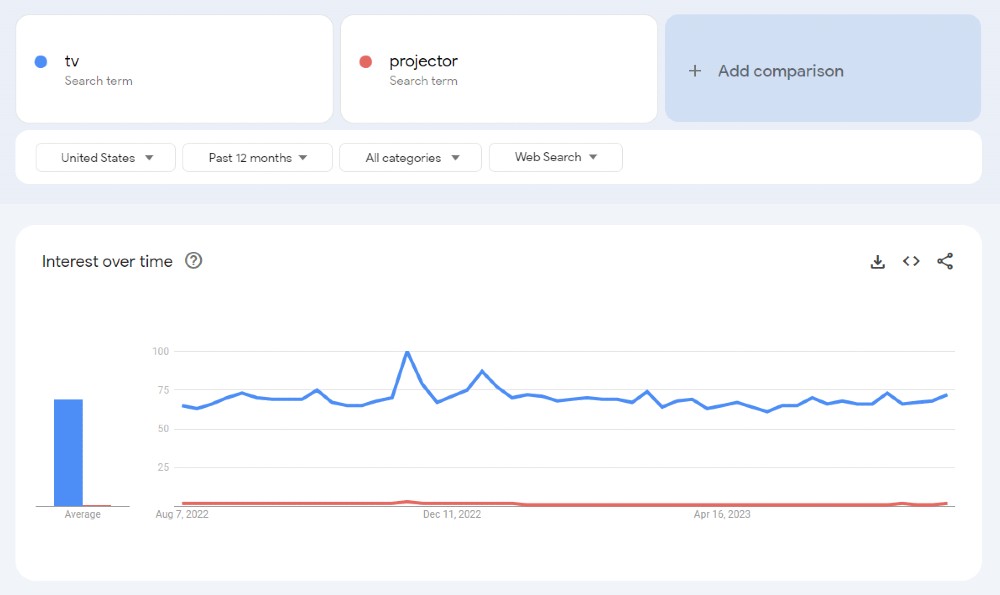Projectors have always found their use in commercial and educational environments like businesses, offices, classrooms, conference rooms, etc.
Thus, projectors are synonymous with expensive display devices.
Sure, there are feature-packed projectors available under budget. However, compared to TVs, with the technology and features they offer, projectors are more expensive in a head-to-head comparison.
If you’re wondering, ‘Why are projectors so expensive?’ I’ve listed 7 reasons that make projectors costlier than TV.
7 Reasons Why Projectors are Expensive than TVs
1. Costlier Display Technology
Projectors have numerous display technologies like single-LCD, 3LCD, DLP technology, LCoS, and more. In addition, it also requires lighting technology like metal halide lamps, LED lamps, or laser light.
These technologies are expensive because some of them have moving parts. In addition, a projector also has numerous lenses and mirrors for correct projection and focusing, which increase the overall cost.
Surely, LCD projection technology with an LED light source is cheaper and available in low-cost projectors. However, other projection technologies are costlier, which increases the final price.
For context, it’s similar to QLED & OLED technologies, which are expensive and make the TV costlier.
2. Cooling Technology
Projectors run hotter than TVs. Therefore, they require much better cooling technology.
Depending on the projector, it can contain several air filters, exhaust vents, cooling fans, etc. Many projectors require temperature sensors to automatically turn off the projector or reduce brightness when it runs too hot.
Comparatively, most TVs don’t require such sophisticated cooling technology because they don’t generate as much heat as projectors.
3. High-Quality Speakers
TVs have a bad reputation for low-quality speakers. The same cannot be said about projectors.
Surely, cheap projectors have poor-quality speakers. But projectors from known brands like Epson, BenQ, and Optoma come with good-quality speakers.
Definitely, these built-in speakers cannot compete with a standalone speaker system. Yet, they are of higher quality than the ones found in TVs.
4. Multiple Components
A Projector consists of display technology, lighting technology, cooling system, lenses, mirrors, electrical components, speakers, dust-proof casing, etc.
Some of these components are cheap, while others are expensive. A combination of these components is enough to raise the final price.
In comparison, a TV has limited components, which helps keep the price down.
5. Lower Demand
It’s no secret that TVs are more popular than projectors. How much do you ask?

The above image is a screenshot of a comparison between a TV and a projector on Google Trends.
As you can see, the demand for projectors is next to nothing compared to TVs. For context, TVs are 6000-7000% more popular than TVs.
The lower demand results in limited manufacturing of projectors, which results in a higher price.
6. Mechanical & Digital features
Projector manufacturers add numerous mechanical and digital features to make their projectors more interesting and unique than their competitors.
Lens shift is a popular mechanical feature available only in high-end projectors. It mechanically moves the projection lens up and down for a better projection.
Several smart projectors also come with a built-in camera. The camera helps in autofocusing, thereby reducing manual adjustments.
In addition, projectors also come with numerous digital features like:
- Automatic keystone correction
- Obstacle avoidance
- Automatic zoom and resizing
- Lamp saving modes
- Pixel shifting technology
- …and more
Smart projectors also come with built-in Android TV with custom skin, which demands regular updates, including security patches. These features collectively make a projector more expensive.
7. Portability
Gone are the days when projectors were notorious for being heavy. Projectors have become battery-powered, so you can easily store them in your pocket.
Similarly, traditional projectors have become compact and lightweight. To achieve this, projector manufacturers must do constant R&D to make their components smaller and fit within a small case.
Not everyone wants to set up a home theater or replace their TV with a projector. Most people require it for casual use, and they can’t manage a projector that’s heavy, complicated to set up, and runs extremely hot.
The constant R&D and the need to make projectors portable by making internal components smaller, adds to the overall cost.
Conclusion
As you’ve seen, these are the top 7 reasons projectors are more expensive than TV. However, it isn’t only limited to these 7 factors. It can vary based on the projector, manufacturer, customer requirements, and form factors.
Next time, if you’re wondering why a $200 TV comes with 4K resolution and smart features and a projector does not? You’ll know the reason why.





